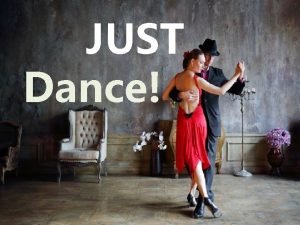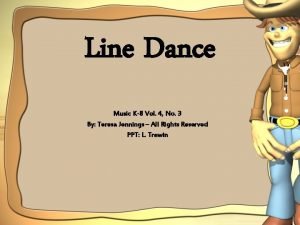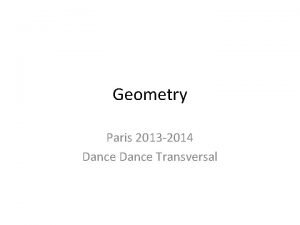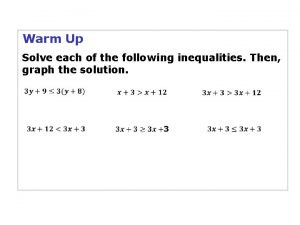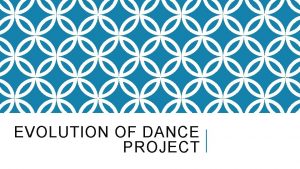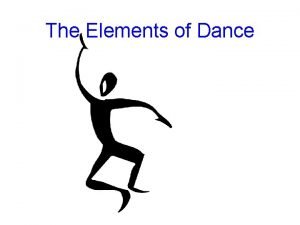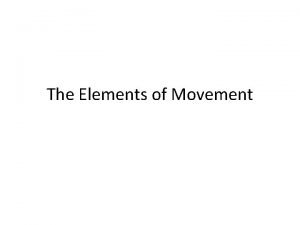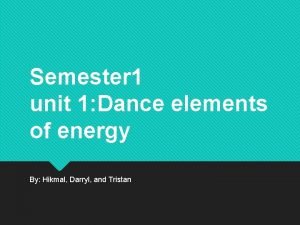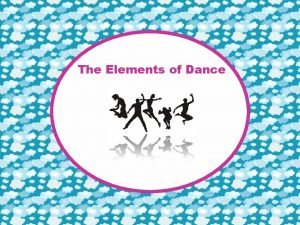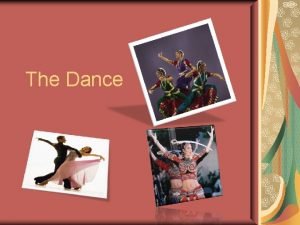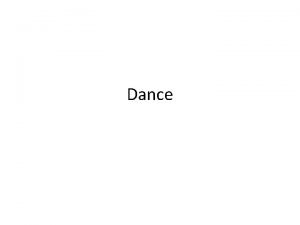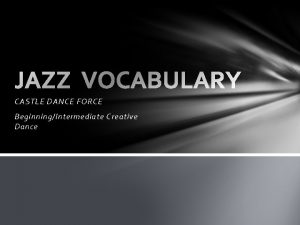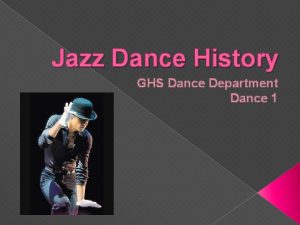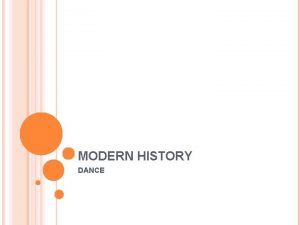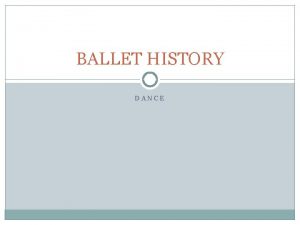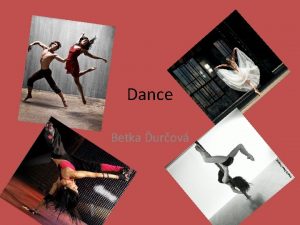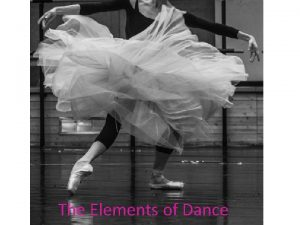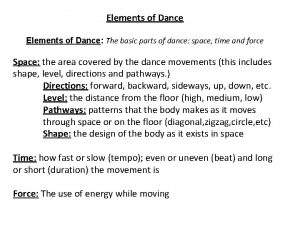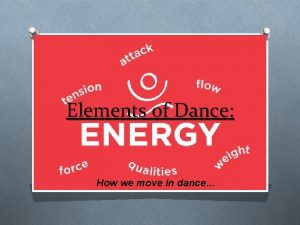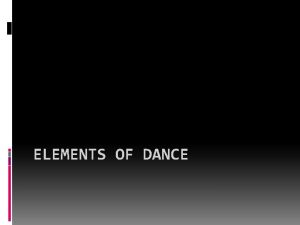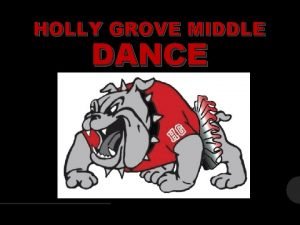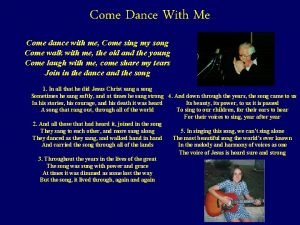The Elements of Dance The Elements of Dance



















- Slides: 19

The Elements of Dance

The Elements of Dance • Body • Action • Space • Time • Energy

A dancer moves through space and time with energy using relationships.


Body In dance, the body is the mobile figure or shape, felt by the dancer, seen by others. The body is sometimes relatively still and sometimes changing as the dancer moves in place or travels through the dance area. Dancers may emphasize specific parts of their body in a dance phrase or their whole body.

• • • Parts of the Body: head, eyes, face, shoulders, fingers, torso, legs, feet, etc. Whole Body: body shape: symmetrical/asymmetrical, rounded, twisted, angular, arabesque, elongated, squat body systems: muscles, bones, organs, breath, balance, reflexes inner: senses, perceptions, emotions, thoughts, intention, imagination, identity, reflection


Action is any human movement included in the act of dancing—it can include dance steps, facial movements, lifts, carries, and catches, and even everyday movements such as walking. Dancers may choose movement that has been done before, or they may add their own original movements to the existing dance movement vocabulary. Dancers may also revise or embellish movement they have learned from others.

Non-locomotor (axial): stretch, bend, twist, turn, rise, fall, swing, rock, tip, shake Locomotor (traveling): slide, walk, hop, somersault, run, skip, jump, leap, roll, crawl, gallop, chainé turns, do-si-do


Dancers interact with space in a myriad of ways. They may stay in one place and move parts of their body or their whole body, or they may travel from one place to another. They may alter the direction, level, size, and pathways of their movements.

• • Size: large, small, narrow, wide Level: high, medium, low Place: on the spot (personal space), through the space (general space), upstage/downstage Direction: forward/backward, sideways, diagonal, right/left Orientation: facing Pathway: curved/straight, zig-zag, random Relationships: in front, behind, over, under, alone/connected, near/far individual & group proximity to object


Time may also be organized in other ways including clock time, sensed time, and event-sequence. Dancers may take sight cues from each other to start the next phrase or use a shared awareness of sensed time to end a dance. They may even take cues from an event such as a train whistle during an outdoor dance performance. The inherent rhythms in our movement and our aural landscape are a rich source of variation in dance.

Metered: pulse, tempo, accent, rhythmic, pattern Free Rhythm: breath, open score, sensed time, improvisation Clock Time: seconds, minutes, hours Timing relationships: before, after, unison, sooner than, faster than


Energy is about how movement happens—it refers to the dynamics of an action and can mean both the physical and psychic energy that drives and characterizes movement. Energy choices may also reveal emotional states. For example, a powerful push might be aggressive or playfully boisterous depending on the intent and situation. A delicate touch might appear affectionate or perhaps suggest concern, even fear.

Attack: sharp/smooth, sudden/sustained Weight: Strength: push, horizontal, impacted Lightness: resist the down, initiate up Resiliency: rebound, even up and down Flow: free, bound, balanced, neutral Quality: flowing, tight, loose, sharp, swinging, swaying, suspended, collapsed, smooth

The Elements of Dance • Body • Action • Space • Time • Energy
 We're gonna dance to one song
We're gonna dance to one song Better known electric slide
Better known electric slide Dance is just a hobby
Dance is just a hobby Everybody dance and sing line dance
Everybody dance and sing line dance Dance dance transversal
Dance dance transversal The dance committee hired a dj for the fall dance
The dance committee hired a dj for the fall dance Elements of dance
Elements of dance What are the characteristics of contemporary dance?
What are the characteristics of contemporary dance? Size elements of dance
Size elements of dance Action elements of dance
Action elements of dance Energy elements of dance
Energy elements of dance Element of dance body
Element of dance body Bảng số nguyên tố
Bảng số nguyên tố Thiếu nhi thế giới liên hoan
Thiếu nhi thế giới liên hoan Vẽ hình chiếu vuông góc của vật thể sau
Vẽ hình chiếu vuông góc của vật thể sau Một số thể thơ truyền thống
Một số thể thơ truyền thống Các châu lục và đại dương trên thế giới
Các châu lục và đại dương trên thế giới Thế nào là hệ số cao nhất
Thế nào là hệ số cao nhất Sơ đồ cơ thể người
Sơ đồ cơ thể người Tư thế ngồi viết
Tư thế ngồi viết


